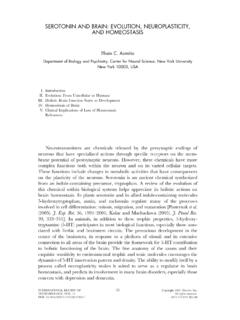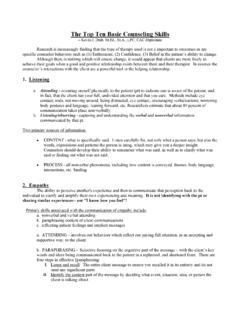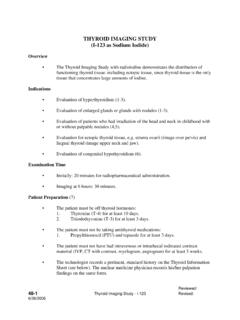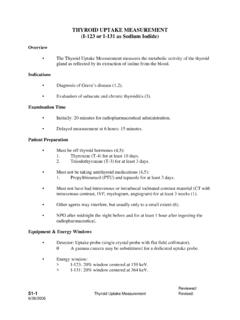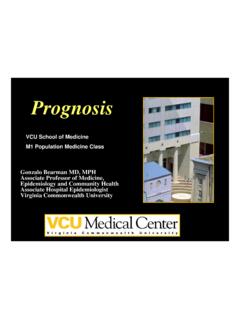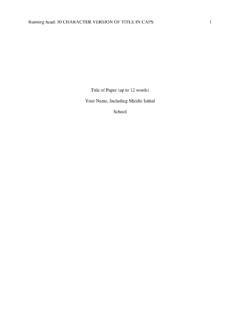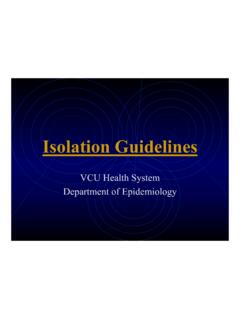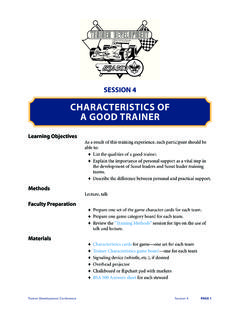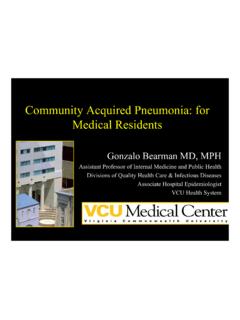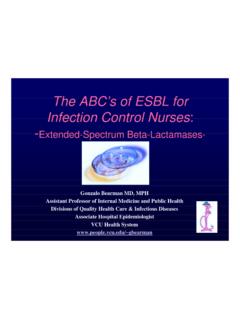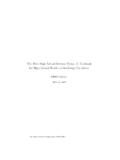Transcription of CHAPTER CARDIOVASCULAR DRUGS
1 CHAPTER CARDIOVASCULAR DRUGS The American Heart Association estimates that greater than 50% of deaths are related to some form of CARDIOVASCULAR disease, and many of these may be effectively prevented by appropriate external intervention. CARDIOVASCULAR DRUGS can be broadly categorized as 1) anti-anginals, 2) anti-arrhythmics, 3) anti-hypertensives, 4) anti-coagulants, 5) anti-hyperlipidemic agents, 6) hypo-glycemic agents, and 7) anti-thyroid DRUGS and thyroid hormones. This CHAPTER includes a discussion of the first four categories. ANTI-ANGINAL DRUGS Introduction Anti-anginals are pharmaceutical agents used to treat angina pectoris, a disease of the coronary arteries. The coronary arteries supply oxygen-laden blood from the left ventricle to all heart muscles including those of the ventricles themselves.
2 Coronary arteries maintain cardiac function and are expected to adapt to sudden demands on the heart due to enhanced activity. Typically the arteries respond to this sudden demand by dilatation. However, it is possible that they may have developed atheromatous deposits that restrict the flow of blood even under normal conditions and more so under strenuous activity. The heart has to exert more to increase the blood flow through such atheroslerotic arteries. In this situation the heart is deprived of oxygen and feels suffocated, a condition called ischemic. Angina is the principal symptom of an ischemic heart creating a sudden, severe pain that originates in the chest and radiates through the left shoulder down the arm. Types of Anti-anginal DRUGS There are three classes of agents that relieve anginal pain: organic nitrates and calcium channel antagonists are indicated in spasmatic and chronic stable angina, while -adrenergic antagonists are primarily for exertion-induced angina.
3 Anti-anginal agents mainly alleviate the pain by reducing the oxygen requirements of the heart, thereby Copyright 2003-2004 Umesh R. Desai, Department of Medicinal chemistry , VCU, Richmond reducing anginal pain. Each class of anti-anginal agent utilizes a distinct mechanism for reducing the heart workload and consequently may be simultaneously used to increase the therapeutic effect. organic Nitrates organic nitrates are also called nitrovasodilators. Amyl nitrite, 1., was the first anti-anginal agent discovered in 1867. Several organic nitrates with varying potency are now available for clinical use. Although newer agents such as the calcium channel antagonists and -adrenergic antagonists have been introduced, organic nitrates remain the DRUGS of choice for treating spasmatic episodes of angina.
4 chemistry : Nitrovasodilators are small nitrate or nitrite esters of simple organic alcohols, whereas normal organic esters, RCOOR , are a combination of an organic acid (RCOOH) with an organic alcohol (R OH), The nitrovasodilators are esters of nitrous (HNO2) or nitric (HNO3) acid with an organic alcohol, Figure 1. It is important to note that all nitrate (nitrite) esters consist of an O-N bond, and not a C-N bond. The common name nitroglycerine, 2., suggesting the presence of a nitro group (NO2) attached to an alkyl carbon, is a misnomer and should be more appropriately called glyceryl trinitrateisoamyl nitrite. Also amyl nitrite consists of an isoamyl group and should be more correctly called isoamyl nitritie. As can be seen from structures 1-5, the nitrovasodilators are small uncharged organic molecules.
5 A specific advantage results from this characteristic. Because of their non-polar nature these agents exhibit very high lipid permeability. Thus rapid treatment of acute anginal episodes is possible through fast absorption relieving the patient of severe pain. Most agents are fairly volatile causing some concern in handling. Being esters, nitrovasodilators are susceptible to hydrolysis and hence long-term storage is a concern due to loss of activity. Preparations of these agents should be protected from moisture. In addition, these nitrate esters also exhibit potential for explosion. Thus many are available in diluted forms in the presence of excipients that minimize the potential for hazardous explosion. 2 Pharmacokinetics The onset and duration of action of these agents is dependent on the structure of the molecules.
6 The smallest agent amyl nitrite, a gas, can be inhaled and hence is the one that shows almost instantaneous effect upon administration (30 seconds). Although sublingual and oral modes of administration are available, in general, the larger the molecule and more sterically hindered the nitrate group, the longer the onset and the duration of action. Thus glyceryl trinitrate and isosorbide dinitrate, 3., have a shorter onset time (< 5 minutes) in comparison to erythrityl tetranitrate and pentaerythritol tetranitrate (15 30 minutes). Similarly, the duration of action changes from 30-60 minutes for smaller molecules to 3-5 hours for the larger molecules. Metabolism organic nitrates are rapidly metabolized by first pass metabolism in the liver and also extra-hepatic tissues such as blood stream, kidneys, lungs, and intestinal mucosa.
7 The metabolism of the organic nitrates is the principal reason for their action as anti-anginal agents. In this process, the organic nitrates react with cysteine-containing proteins resulting in the release of nitric oxide, NO, that is responsible for the vasodilating effect on the arteries. Thus, the parent organic nitrates do not possess inherent anti-anginal activity and can be viewed as pro- DRUGS , agents that release the therapeutically active entity in the human body. Both chemical and enzymatic processes release NO in situ from the nitrovasodilators. Chemical agents such as cysteine react with organic nitrates to form S-nitrosothiols (R-S-NO) that decompose rapidly to release NO, while glutathione-nitrate reductase is a specific enzyme that reduces the organic nitrates to nitrites that subsequently release NO non-enzymatically.
8 Biochemical Mechanism of Action Figure 2 depicts the biochemical events that regulate the contraction and relaxation function of all muscle (smooth, cardiac, skeletal). The state of muscle (contraction or relaxation) is controlled by the action of myosin-actin pair of proteins. Depending on whether myosin is phosphorylated or not, the action of actin results in either contraction or relaxation of the muscle. The nitric oxide released by nitrovasodilators activates 3 guanylate cyclase an enzyme that produces cGMP. Increase in the concentration of cGMP, in turn, activates protein kinases that phosphorylate MLCK, thus preventing the phosphorylation of myosin and resulting in muscle relaxation, Figure 2. Muscle relaxation, or vasodilation, results in reduced workload for the heart, thus easing anginal pain.
9 Calcium channel antagonists As evident from the above discussion on the simplified mechanism of muscle contraction cellular levels of free Ca+2 ions play an important role. Thus, one may can envisage that molecules that block the passage of Ca+2 ions from the outside to the inside of the muscle cell, Figure 2, will also prevent the contraction of muscles leading to reduced work load and hence lowered oxygen requirement. Out of four different types of calcium channels, an L-type channel, named for its long-lasting nature, is principally responsible for the inward current of divalent calcium ions into skeletal, cardiac and muscle cells. Calcium channel antagonists that bind these L-type channels cause antagonism and are effective as anti-anginal agents.
10 These agents do not physically block the channel, but bind at specific sites in the open form of the channel. chemistry Three classes of calcium channel blockers are currently approved for use in the prophylactic treatment of angina: the dihydropyridines, 6a-c., the benzothiazepines represented by diltriazem, 7., and the aralkylamines, 8a,b. No structural similarities exist between the three classes of compounds suggesting that the activity profile of each class is distinct from the other. Nifedipine,8a, amlodipine, 8b., and nicardipine, 8c., belong to the dihydropyridine class of Ca+2 channel blockers. These have a substituted pyridine ring that is partially saturated as a central common feature. Diltiazem belongs to the benzo[b-1,5]-thiazepine family, seven membered ring containing nitrogen and sulfur atoms fused with an aromatic ring.
